Check out our White Paper Series!
A complete library of helpful advice and survival guides for every aspect of system monitoring and control.
1-800-693-0351
Have a specific question? Ask our team of expert engineers and get a specific answer!
Sign up for the next DPS Factory Training!

Whether you're new to our equipment or you've used it for years, DPS factory training is the best way to get more from your monitoring.
Reserve Your Seat TodayIn 2021, I've been very excited to get back on the road to visit DPS clients. Some people still aren't looking for visitors, but those who are have an opportunity to get a head start on their network reliability.
If the pandemic did anything, it made telecom services even more important. From ISPs to power utilities to county governments, everything just needs to work.
On this trip to Texas, one of my stops was to a county fire department. I traveled with Andy, a new engineer at DPS. Once engineers emerge from our boot camp, we always aim to bring them along on the next available trip. Meeting clients like you and seeing real-world remote sites is the ONLY way to really design excellent equipment and interfaces.
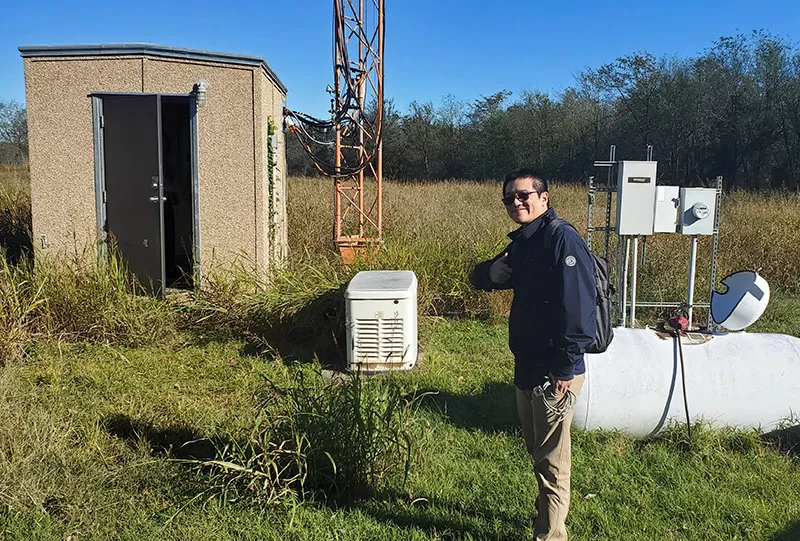
When we arrived, we were instantly greeted by the fire chief. Since he is also responsible for the multiple radio sites owned and operation for county public safety personnel, he was the perfect person to show us those sites and explaining his remote monitoring goals.
In a first for me, I rode along in an emergency vehicle, complete with "WAIL" and "YELP" buttons to control the siren.
Our first stop took us onto a large plot of land that was formerly a coal mine. After the mine ceased operation, the local government took control of the land. Mines must be back-filled and continue to settle for decades, making them unsuitable for immediate land development. Still, it was a good spot to erect a small communications hut and radio tower to improve public-safety communications for police, fire, and other emergency first responders.
After a few miles on remote dirt roads, we reached the tower site.

Doing this job for 15 years now, I have no shortage of animal-mayhem stories from remote telecom sites. This site (and the other two, as I would soon learn) had one of larger insect infestations I've seen. The dead (shot with insecticide spray on previous visits) far outnumbered the living, but there were still several dozen threatening to sting.
As this has been a known issue at the county's radio towers, the fire chief had brought along a can of insecticide spray to make short work of most of the wasps. Oddly enough, there's some evidence that flying insects can be attracted to RF towers because they are sensitive to electromagnetic energy. It's entirely possible, however, that they simply stumble across some warm shelter and settle in.
With a bit of extermination out of the way, we completed a quick site survey.
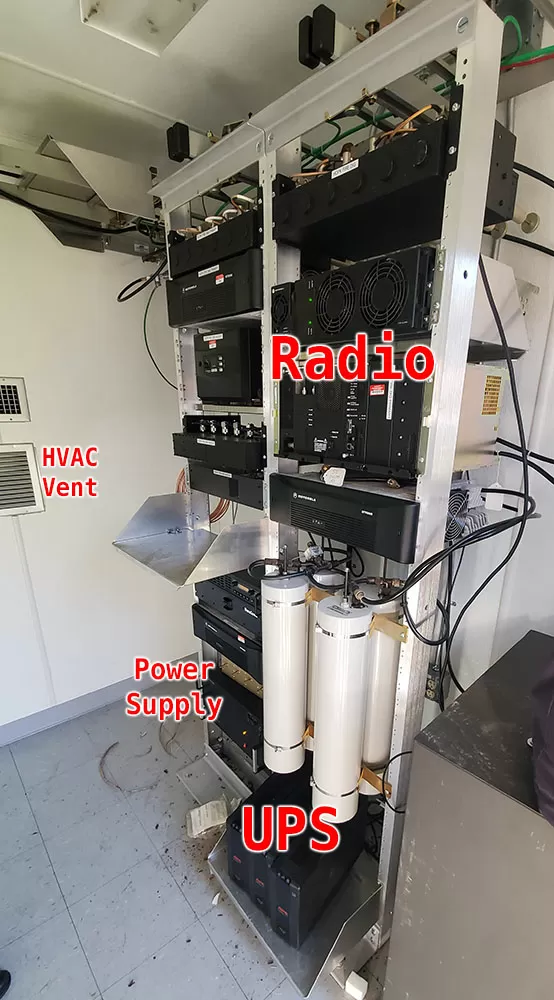
This site was fairly compact, but it contained several important systems:
I took lots of notes and photos, and we came up with a general plan to get this site monitored:
This wasn't nearly the most complex site that has ever used DPS monitoring equipment, but it's always preferred to actually visit and be certain. When I actually visit your site, I get a concrete picture of everything we need to monitor, plus little details like cable lengths.
With this site thoroughly analyzed, we locked up and drove away. We got a quick drive-by tour of the old mining facility, which was a pretty interesting sight that most people can't see anymore without trespassing.
We drove a good 30 minutes or so to the next radio site. Can you see why remote site monitoring is so important for these radio towers?
As is usually the case with tower sites, this one was very similar to the first. I used my sample Rochester Jr propane gauge to compare with the existing needle gauge. Just like at the first site, the Jr (with screw-hole spacing at 1.875 inches) is the right fit. I will need to order the version with screw holes at "3 o'clock" and "9 o'clock" so that the reading is correct.
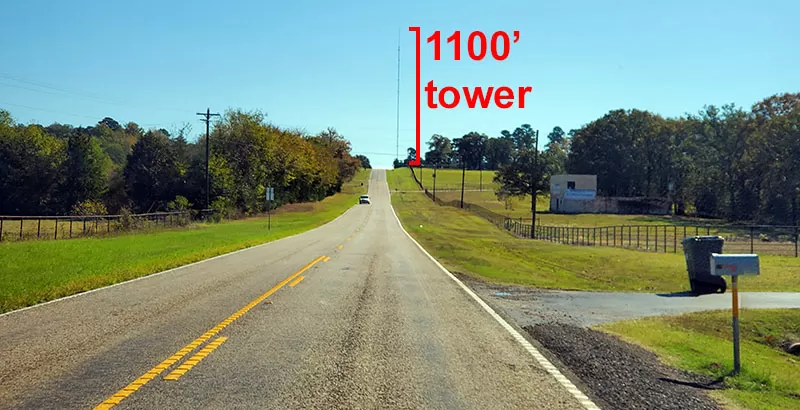
After another decent driving distance, we arrived at the third and final site, which is actually across the border in a neighboring county.
Our host sprayed the customary insecticide on the newly arrived wasps, and we proceeded inside.
This site was bigger, with a large Generac generator on a trailer. Equipment was arranged differently, but it was essentially the same as the previous two sites.
What was unique about this tower was its height: well over 1000 feet tall.The county radio systems were mounted up just a few hundred feet, which matches the height of the previous two dedicated towers. The top of the tower is dedicated to Verizon wireless service. The fairly extreme height is important for strong wireless coverage in this fairly rural part of Texas.
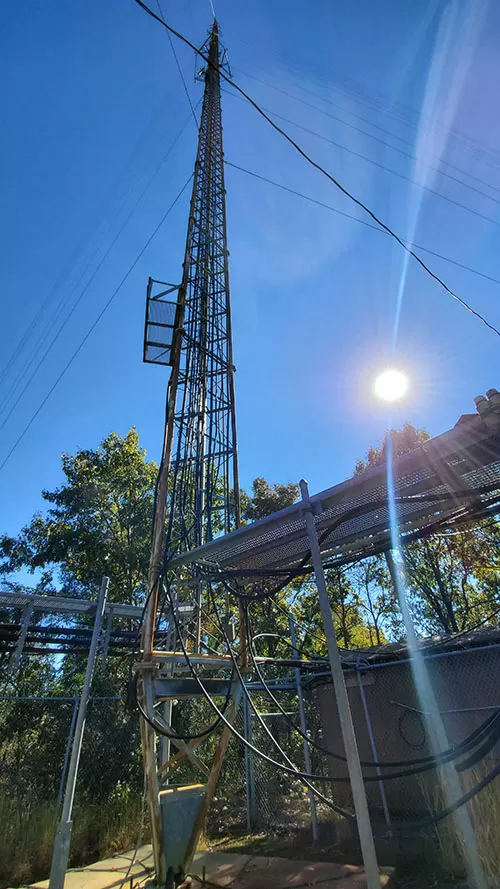
I'm always thrilled when visiting DPS clients. We often meet in conference rooms to plan future monitoring projects. As long as the right experts are in the room to answer my questions, this can work just fine.
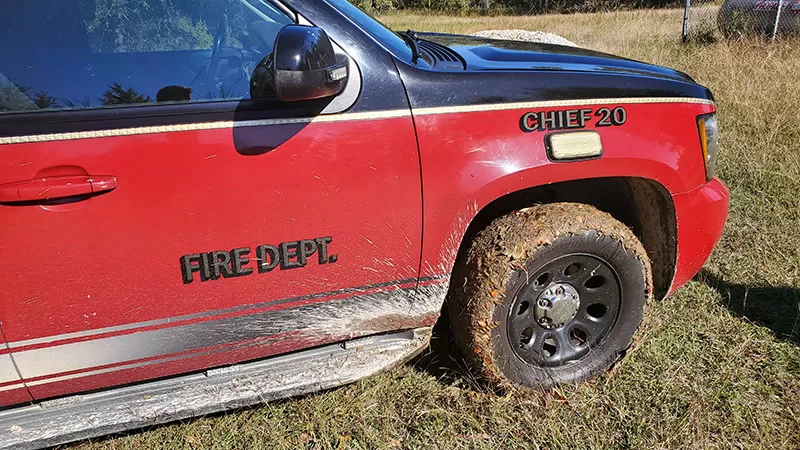
It's always way more satisfying (and interesting) for me and my newer DPS coworkers when we can get out to a remote site. You, the client, benefit from a better guarantee that the equipment I recommend is the perfect fit for your monitoring requirements.
That's why I was so thrilled that we got out to all 3 of the tower sites for this project. I now have an excellent understanding of what I need to quote.
If you see the benefit of a visit from a remote site monitoring expert, tell me!
I'll work to plan a visit to you and several existing/prospective DPS clients in your area. We have a big install base and don't mind driving fairly long distances, so this isn't usually too difficult. I can usually work you into my schedule within about 6 weeks.
I hope to visit you soon to help you survey your remote site monitoring needs.
Give me a call at 559-454-1600 or email me at sales@dpstele.com

Andrew Erickson
Andrew Erickson is an Application Engineer at DPS Telecom, a manufacturer of semi-custom remote alarm monitoring systems based in Fresno, California. Andrew brings more than 17 years of experience building site monitoring solutions, developing intuitive user interfaces and documentation, and opt...